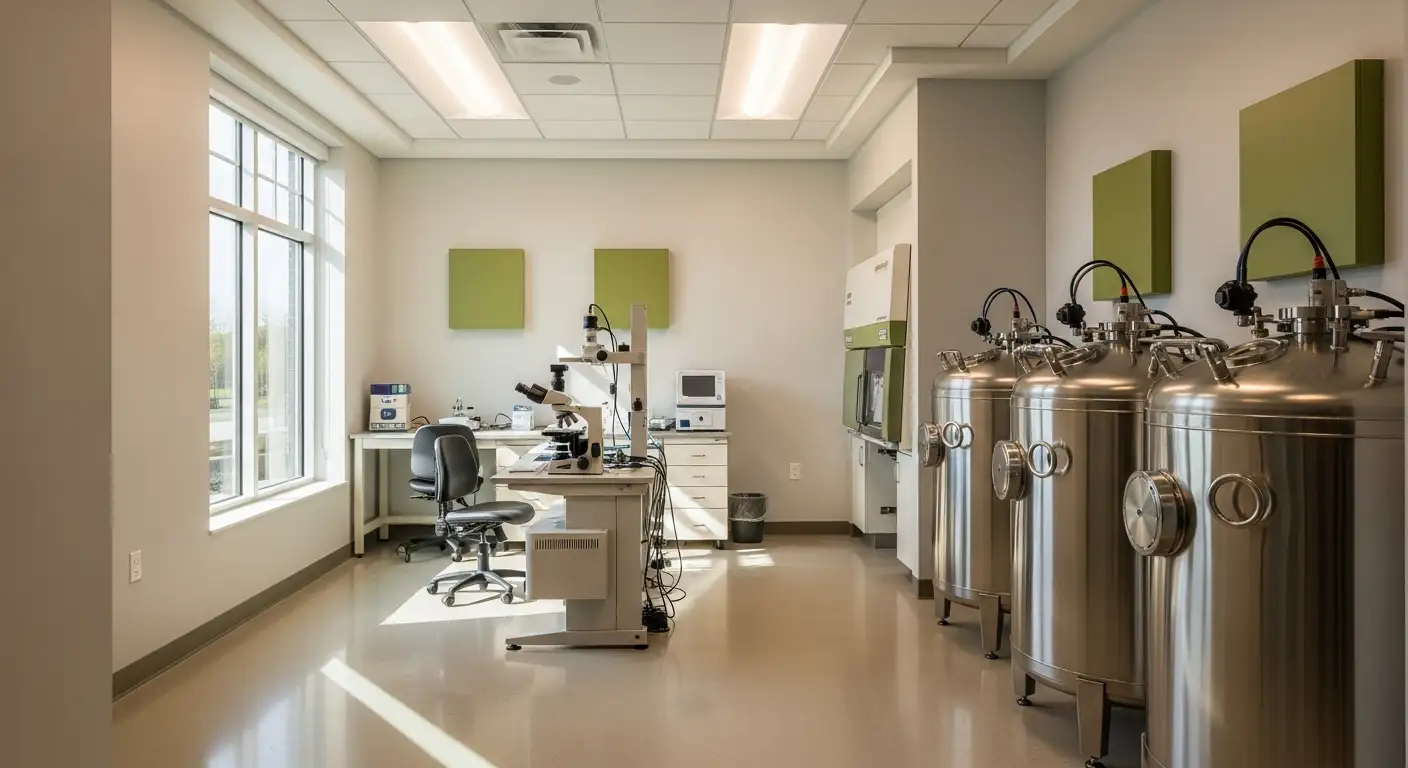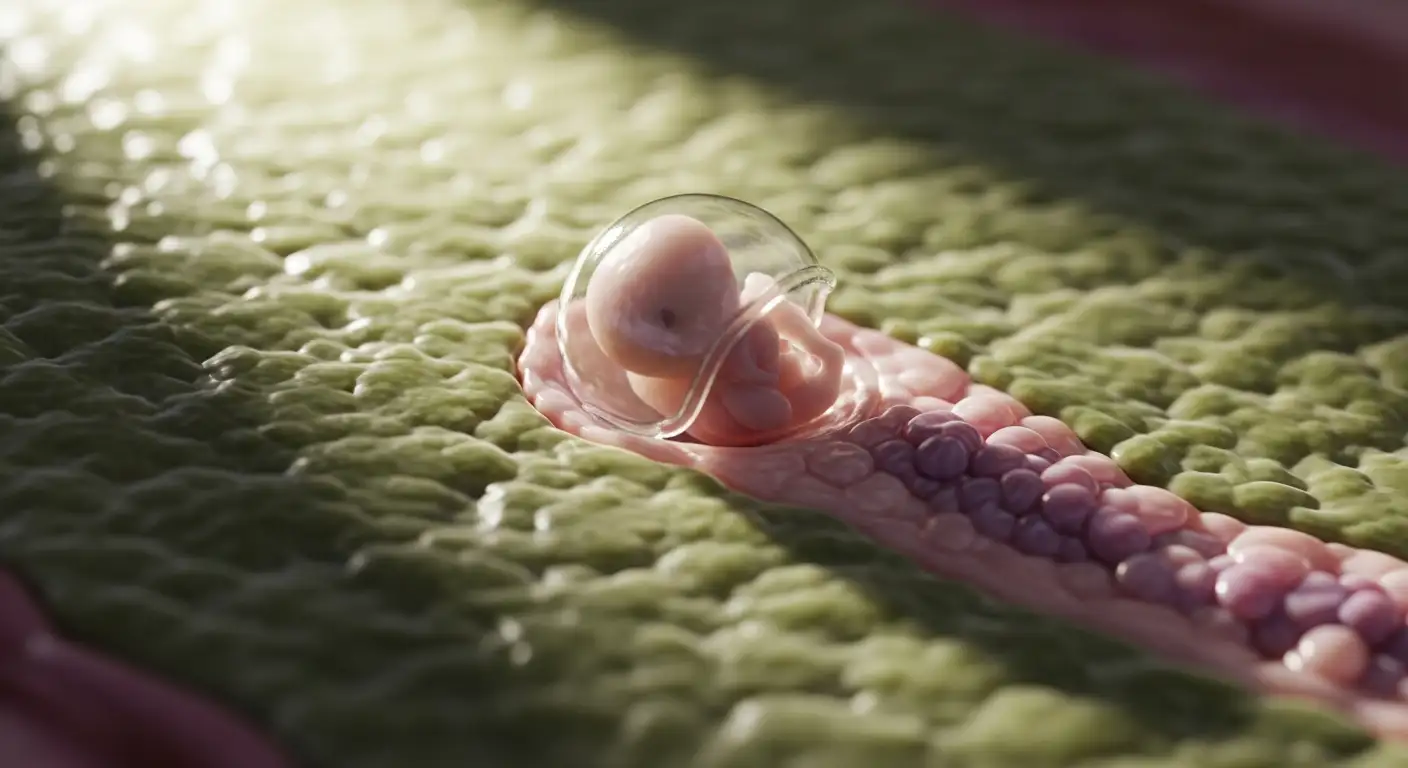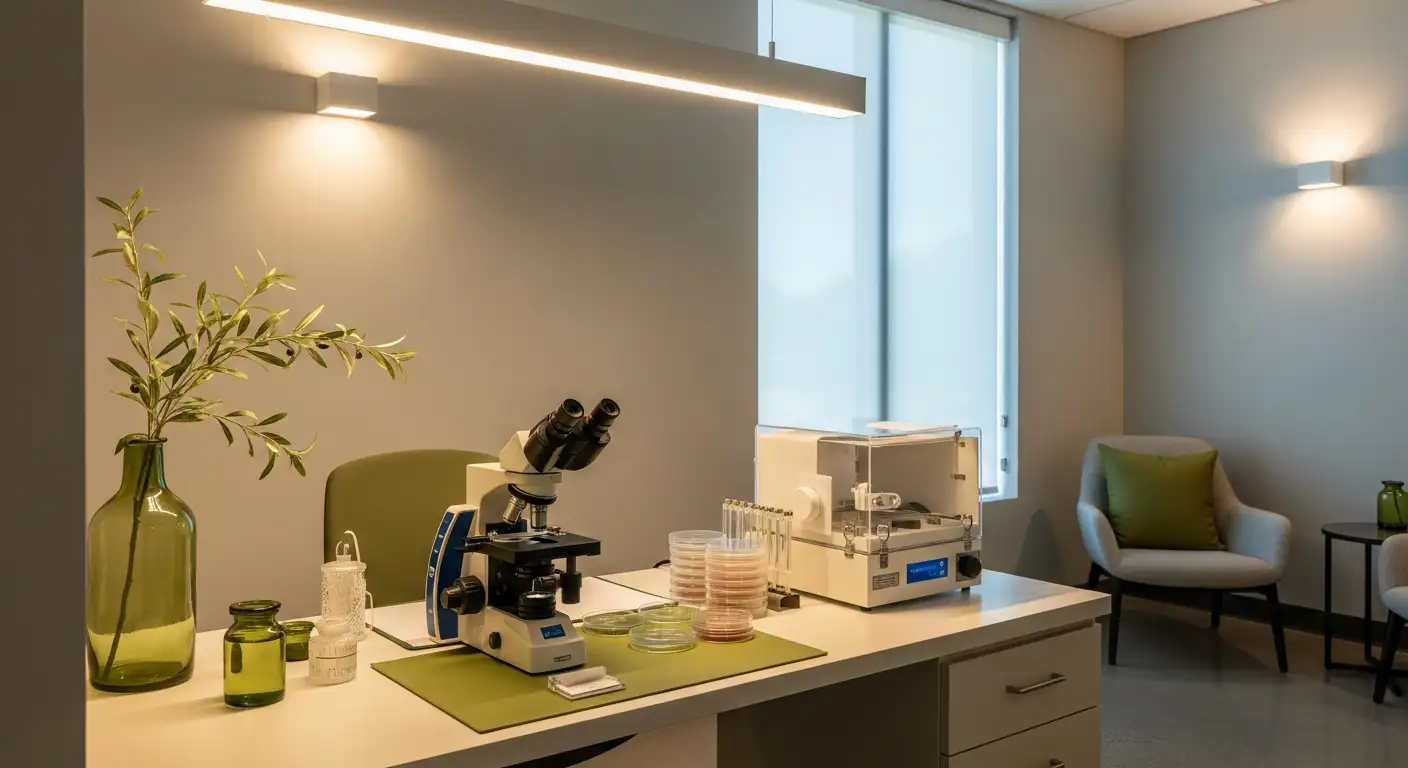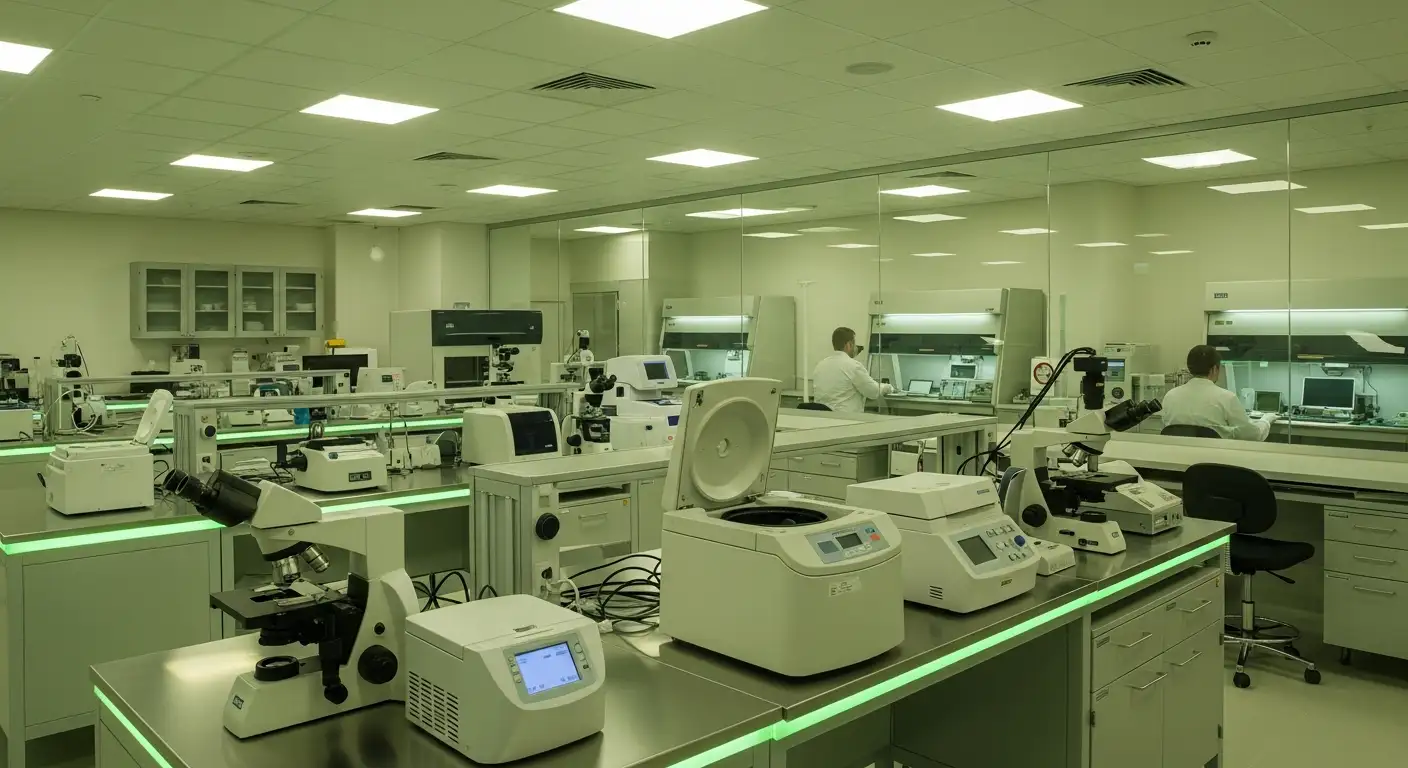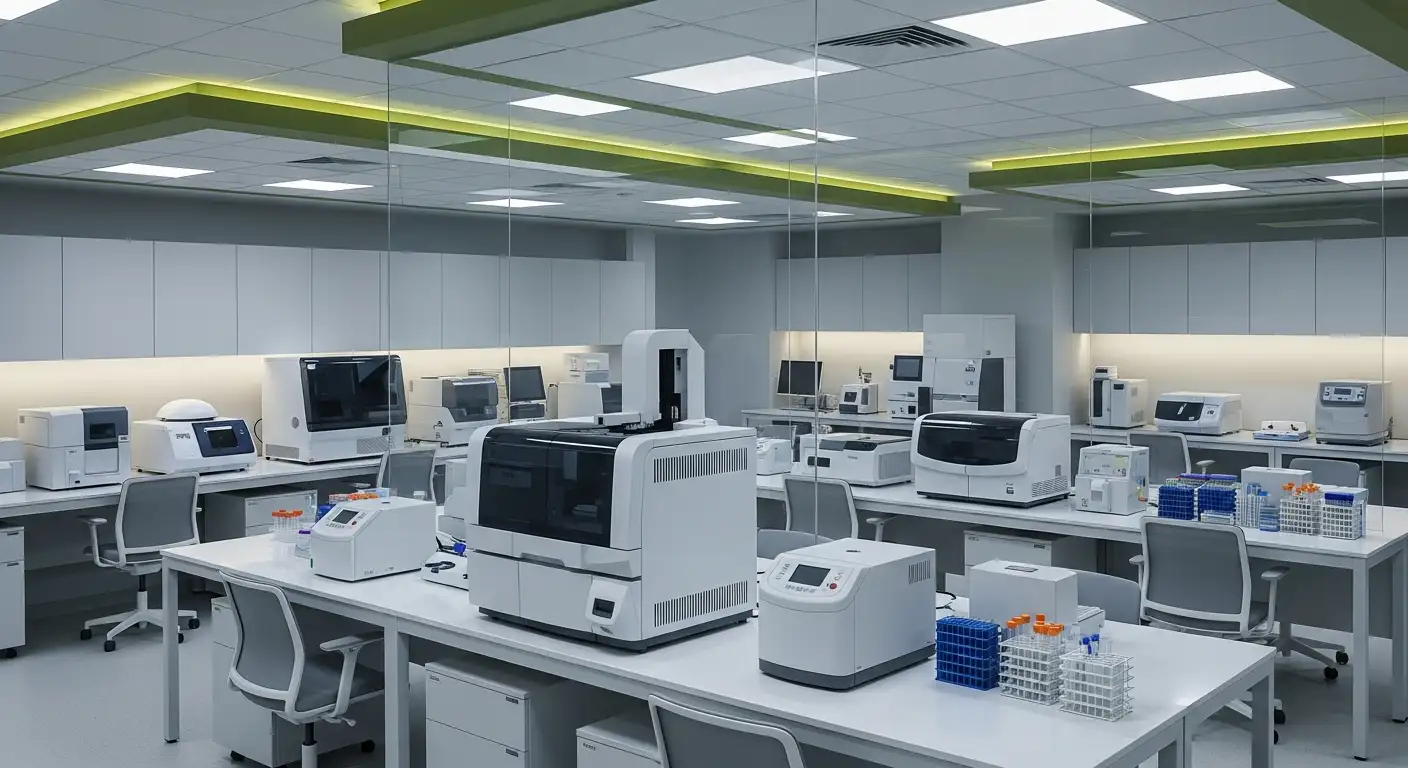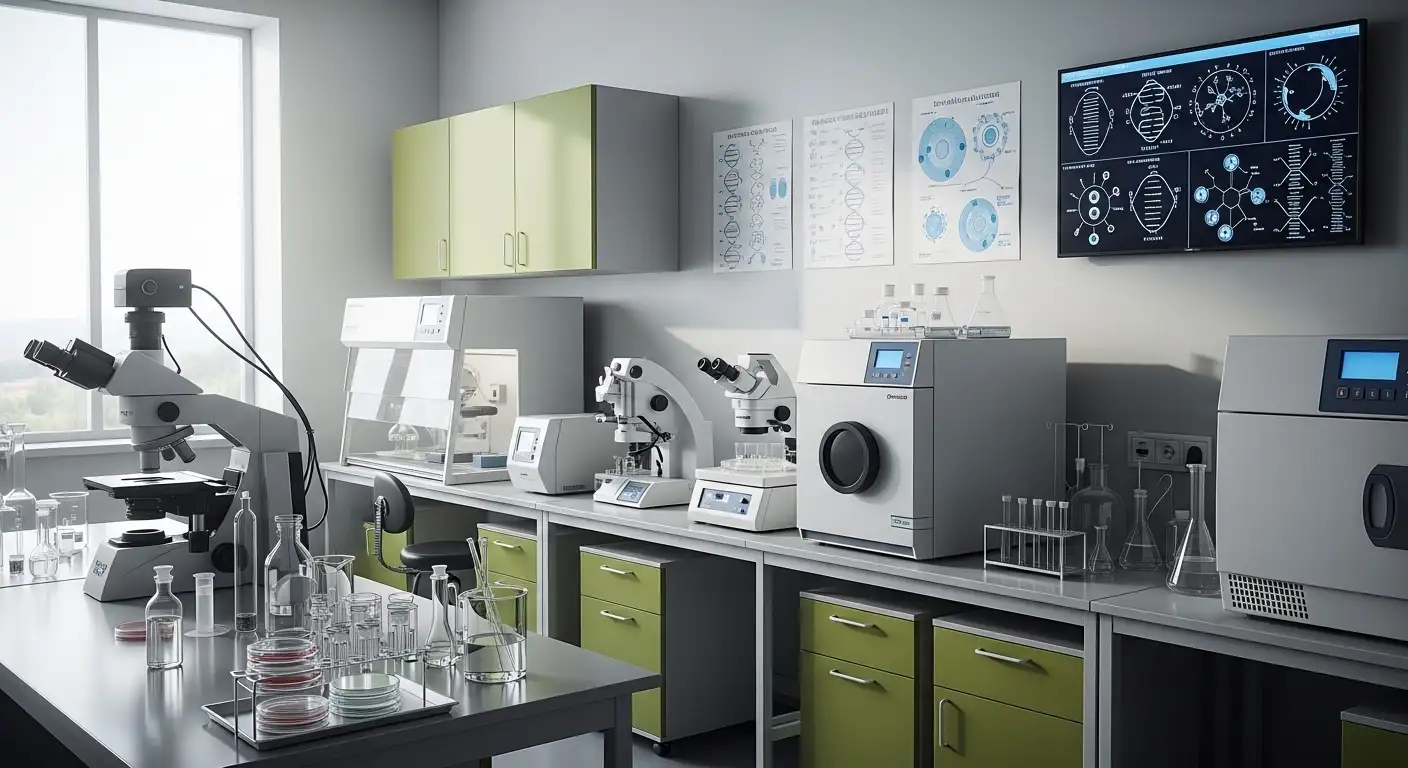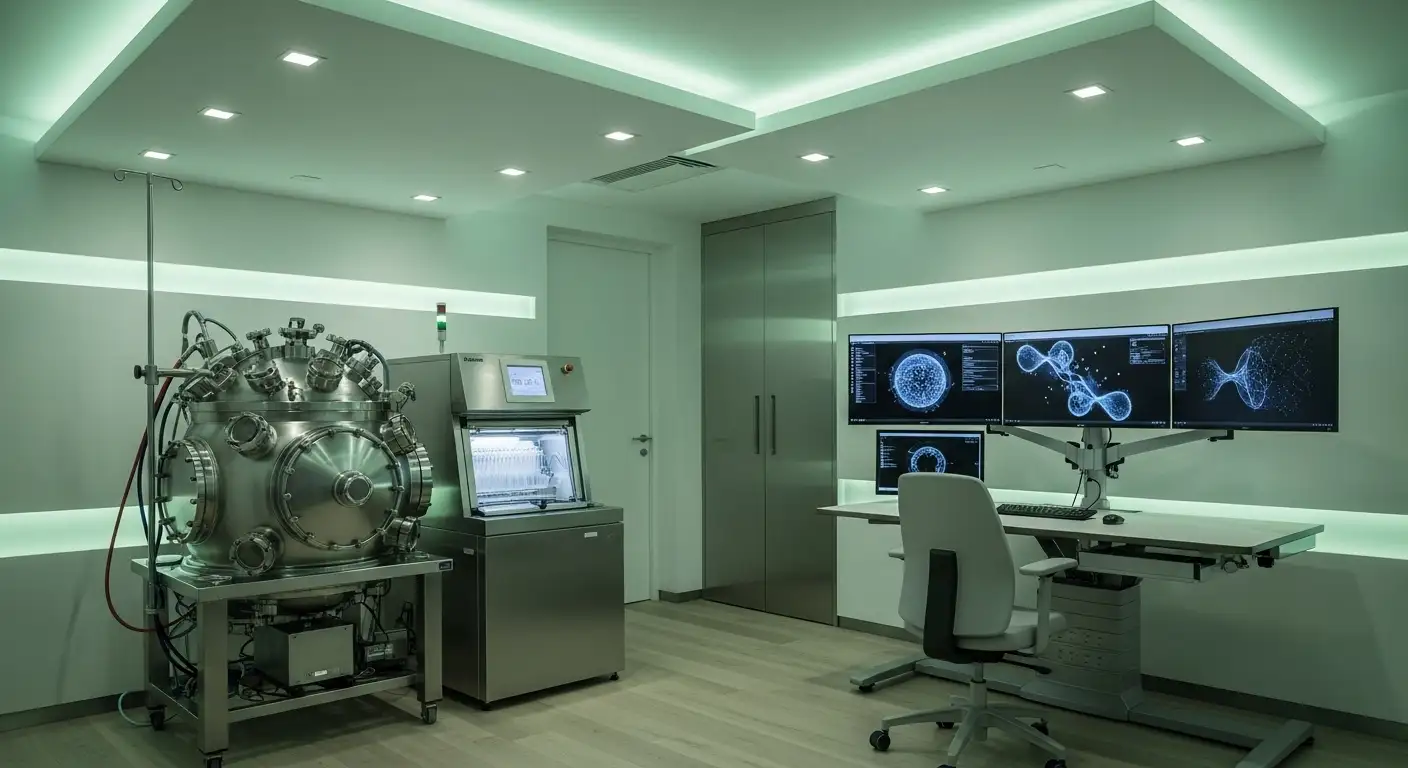How PRP is changing the future of reproductive medicine
Revolutionizing Fertility: The Promise of Platelet-Rich Plasma in Reproductive Health
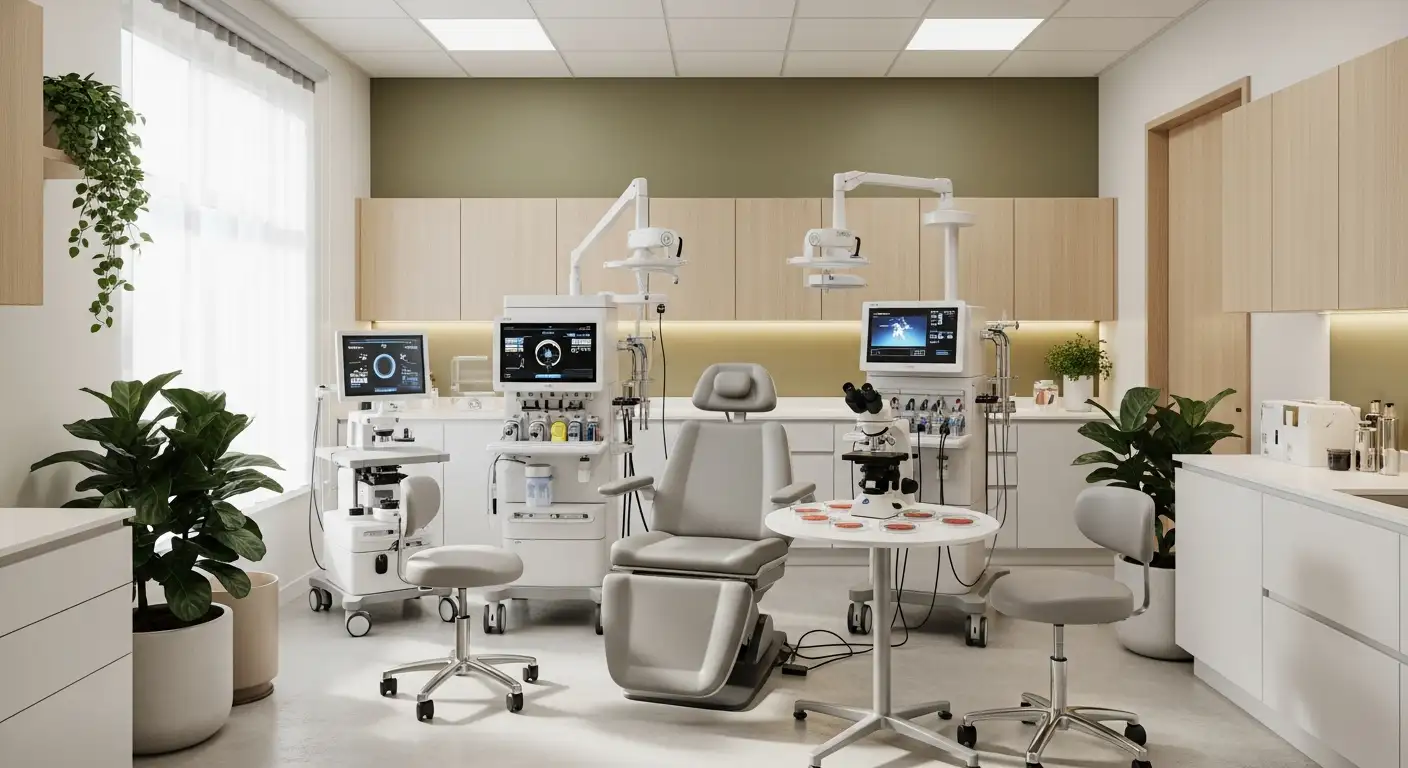
Unveiling a New Frontier in Fertility Treatment
Platelet-rich plasma (PRP) therapy is rapidly gaining attention as a groundbreaking approach in reproductive medicine. Harnessing the regenerative power of a patient’s own blood components, PRP offers hope for women facing challenges such as diminished ovarian reserve, premature ovarian insufficiency, and recurrent implantation failure. This article explores how PRP is transforming fertility treatments by promoting ovarian rejuvenation, enhancing embryo quality, and improving pregnancy outcomes, potentially reshaping the future of reproductive medicine.
Understanding PRP: Composition and Mechanisms of Action

What is PRP?
Platelet-Rich Plasma (PRP) is an autologous blood-derived product obtained by centrifuging a person's own blood to concentrate platelets. This concentration delivers a high level of bioactive molecules essential for tissue repair and regeneration.
Composition and key bioactive molecules
PRP contains a rich mixture of growth factors and cytokines. Key components include:
- Transforming Growth Factor-beta (TGF-β): Supports tissue remodeling and cellular differentiation.
- Platelet-Derived Growth Factor (PDGF): Promotes cell proliferation and angiogenesis.
- Insulin-Like Growth Factors (IGF): Stimulate cellular growth and regeneration.
- Vascular Endothelial Growth Factor (VEGF): Essential for new blood vessel formation (angiogenesis).
- Epidermal Growth Factor (EGF): Encourages cell growth and healing.
- Hepatocyte Growth Factor (HGF) and Fibroblast Growth Factor (FGF): Aid in cell migration, proliferation, and differentiation.
How PRP functions in tissue regeneration and repair
These growth factors work synergistically to enhance cell proliferation, migration, and differentiation, creating a favorable environment for tissue repair. PRP stimulates angiogenesis to improve blood supply, reduces inflammation, and recruits stem cells to sites of damage. In reproductive medicine, such actions help promote follicle development and ovarian tissue healing, thereby potentially restoring ovarian function and improving fertility outcomes.
PRP’s Role in Ovarian Function Restoration

How does PRP contribute to ovarian function restoration?
Platelet-rich plasma (PRP) contributes to restoring ovarian function through several biological mechanisms. When injected into ovarian tissue, PRP releases growth factors like transforming growth factor-beta (TGF-β), platelet-derived growth factor (PDGF), vascular endothelial growth factor (VEGF), and epidermal growth factor (EGF). These factors collectively stimulate tissue regeneration and remodeling.
Mechanisms of ovarian tissue regeneration
PRP promotes ovarian tissue healing primarily by enhancing angiogenesis—the formation of new blood vessels—via growth factors such as VEGF and PDGF. This improved vascularization supports better oxygen and nutrient delivery essential for follicle growth and overall ovarian health. PRP also encourages extracellular matrix remodeling, which aids in the repair of damaged tissue structures within the ovary.
Stem cell activation and follicle reactivation
A crucial aspect of PRP's regenerative role is the stimulation of resident ovarian stem cells. The growth factors present in PRP may activate these local stem cells, triggering their proliferation and differentiation into new follicular cells. This process can potentially lead to the reawakening of dormant primordial follicles, thereby increasing folliculogenesis and improving ovarian reserve markers.
Through these combined actions—tissue remodeling, neoangiogenesis, and stem cell mobilization—PRP fosters a microenvironment conducive to ovarian function restoration. This biological support may result in improved hormone profiles, resumed menstrual cycles, and increased chances of natural conception or better response to assisted reproductive technologies.
Clinical Evidence Supporting PRP in Women with Diminished Ovarian Reserve (DOR) and Primary Ovarian Insufficiency (POI)

What clinical evidence exists for PRP use in women with DOR and POI?
Intraovarian platelet-rich plasma (PRP) has emerged as a potential therapy for women experiencing diminished ovarian reserve (DOR) and primary ovarian insufficiency (POI). Several preclinical studies and early clinical trials have demonstrated encouraging effects on ovarian function.
PRP treatment has been shown to improve key ovarian reserve markers. Specifically, patients receiving intraovarian PRP experienced increases in Anti-Müllerian Hormone (AMH) levels and antral follicle counts (AFC), both indicators of ovarian reserve. These hormonal changes suggest enhanced follicular activity and potential ovarian rejuvenation.
Moreover, intraovarian PRP injections have been linked to the resumption of menstrual cycles in women who previously faced ovarian failure or amenorrhea. This menstrual recovery highlights PRP's potential to reactivate residual ovarian function.
Regarding pregnancy outcomes, spontaneous conception has been reported in women treated with PRP, particularly among those with POI. Spontaneous pregnancy rates fluctuate between approximately 7.4% and 10%, indicating a promising but not definitive effect on fertility restoration.
However, while improvements in ovarian reserve and hormonal profiles are promising, larger controlled studies are still needed to confirm sustained fertility benefits and live birth rates following PRP treatment in this patient population.
These findings position intraovarian PRP as a novel, minimally invasive intervention that could enhance ovarian function and improve reproductive potential in women with compromised ovarian reserve or premature ovarian insufficiency.
Improving IVF Outcomes with PRP Therapy
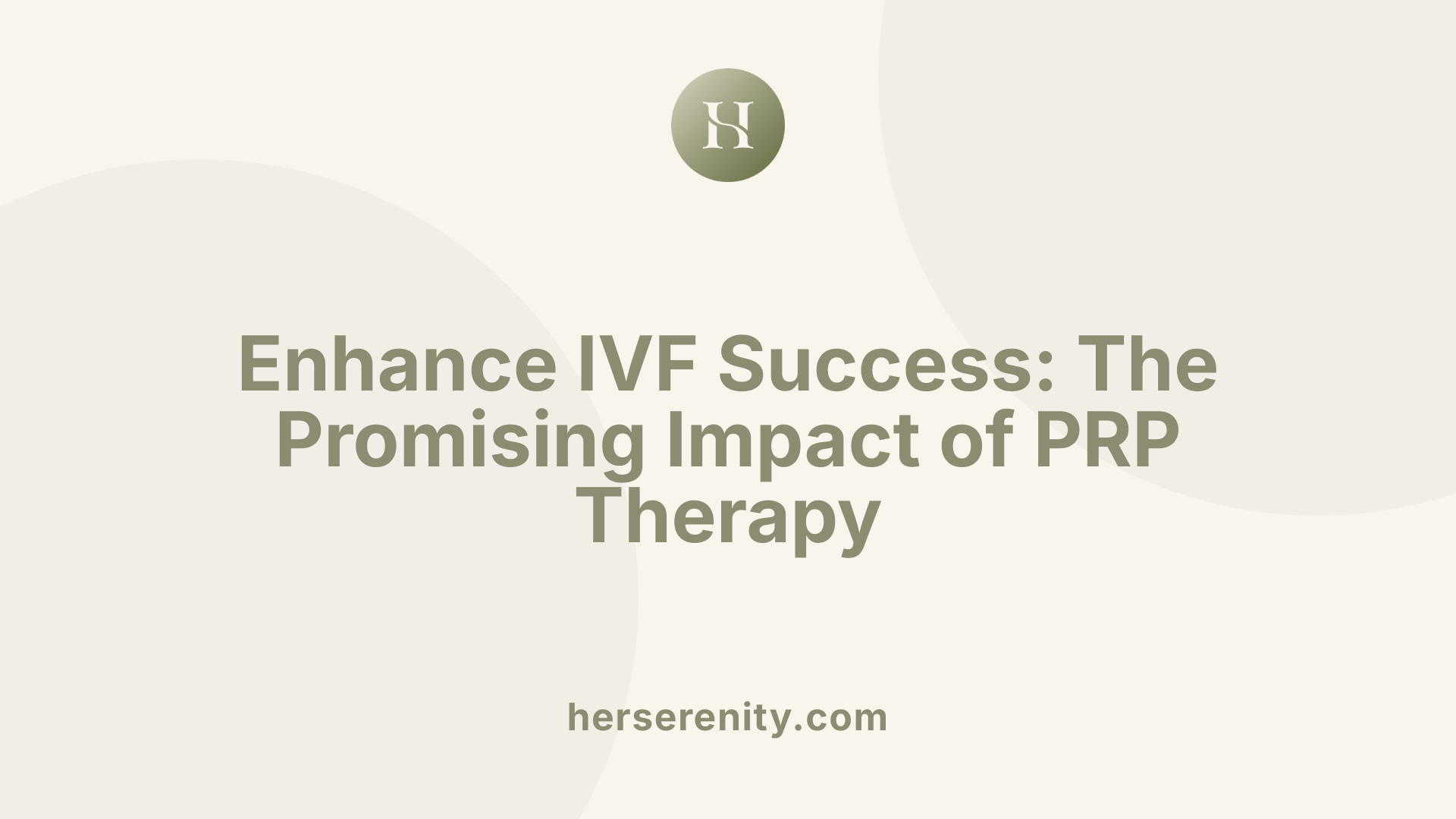
How does PRP therapy impact IVF outcomes?
Intraovarian platelet-rich plasma (PRP) therapy has demonstrated promising effects on IVF success, particularly by enhancing the number and quality of oocytes retrieved. Studies report that PRP injection results in a significant increase in mature (metaphase II) oocyte yield, reflecting improved ovarian responsiveness in patients who previously exhibited poor embryo quality or diminished ovarian reserve.
Effects on oocyte number and quality
PRP treatment elevates oocyte quality, reflected in higher maturation and fertilization rates. This improved quality contributes to better embryo development potential, which is critical for successful IVF outcomes. Women receiving PRP therapy have experienced increased numbers of mature oocytes available for fertilization compared to their prior treatment cycles.
Blastocyst count and quality improvements
Following PRP administration, total blastocyst counts rise notably, with a marked increase in good-quality blastocysts. These embryos are better suited for implantation, offering improved chances for pregnancy. The rates of both total and good-quality blastocysts were shown to be significantly higher in PRP-treated groups, indicating better embryo viability.
Optimal timing for PRP administration
The therapeutic effects of PRP are time-sensitive. The most pronounced improvements in ovarian response and embryo quality were observed when controlled ovarian hyperstimulation (COH) was conducted within one to two months after PRP injection. This timing likely maximizes the regenerative and angiogenic actions of the growth factors present in PRP, such as PDGF and VEGF, thus creating a more favorable ovarian environment.
Overall, intraovarian PRP injection represents a promising adjunct to assisted reproductive technology, especially for women with poor ovarian response or diminished ovarian reserve. By improving oocyte maturation and embryo quality, PRP therapy has the potential to enhance IVF success rates, though further large-scale, controlled trials are needed to standardize protocols and confirm long-term benefits.
Limitations and Challenges in PRP Fertility Treatment Studies

What are the current limitations of PRP clinical research in reproductive medicine?
Platelet-rich plasma (PRP) therapy has generated considerable interest for its potential to improve ovarian function, oocyte quality, and fertility outcomes. However, several limitations restrict its current clinical application in reproductive medicine.
Firstly, there is considerable variability in PRP preparation protocols. Differences in centrifugation methods, platelet concentration, presence or absence of leukocytes, and dosing lead to inconsistent product composition. This lack of standardization makes it difficult to compare results across studies or to replicate findings reliably.
While many studies report encouraging improvements in markers like Anti-Müllerian Hormone (AMH), antral follicle count (AFC), and oocyte quality, the ultimate pregnancy outcomes remain mixed. Some clinical trials and observational studies have not shown significant increases in implantation rates, clinical pregnancy, or live birth rates in women with poor ovarian response (POR) or primary ovarian insufficiency (POI). For example, although spontaneous pregnancy rates up to around 10% have been reported, robust improvements in live birth outcomes have not been consistently observed.
The heterogeneous study designs, small sample sizes, and lack of randomized controlled trials further limit the strength of evidence. Moreover, the timing between PRP injection and ovarian stimulation is critical, with most beneficial effects observed when ovarian hyperstimulation occurs within one to two months after injection, adding another variable to control.
Therefore, well-designed prospective randomized clinical trials with standardized PRP preparation and administration protocols are urgently needed. These studies should aim to clarify the optimal patient populations, timing, dosing, and long-term safety to firmly establish PRP's efficacy and utility in fertility treatments.
| Challenge | Description | Impact on Research and Clinical Use |
|---|---|---|
| Protocol Variability | Different PRP preparation methods lead to variable product composition | Limits reproducibility and comparability of study outcomes |
| Mixed Pregnancy Outcomes | Improvements in ovarian reserve markers not consistently matched by increased live birth rates | Creates uncertainty regarding true clinical benefit |
| Study Design Limitations | Small cohorts, lack of control groups, and heterogeneous patient selection | Weakens evidence strength, hindering guideline development |
| Timing of Treatment | Optimal window between PRP administration and ovarian stimulation is not standardized | Affects effectiveness of intervention |
| Need for Standardization | No consensus on dosage, administration techniques, or follow-up protocols | Clinical adoption remains cautious without clear protocols |
PRP’s Application in Chemotherapy-Induced Ovarian Damage
Can PRP Help Women with Chemotherapy-Induced Ovarian Damage?
Chemotherapy and radiation often cause significant damage to ovarian tissue, leading to diminished ovarian reserve and impaired fertility. Platelet-rich plasma (PRP) has emerged as a promising regenerative approach to address this challenge. PRP injections into the ovaries have shown potential in stimulating local stem cells and promoting ovarian tissue remodeling.
Regeneration of Damaged Ovarian Tissue
PRP contains a rich mix of growth factors like PDGF, VEGF, TGF-β, and IGF-1 that encourage angiogenesis and tissue repair. This bioactive environment supports neoangiogenesis, reducing apoptosis and inflammation within damaged ovarian tissue. Consequently, PRP can accelerate the restoration of ovarian tissue integrity, activating dormant follicles and improving structural repair after chemotherapy-induced insult.
Restoration of Ovarian Function Post-Treatment
Clinical and preclinical studies suggest that PRP infusion may increase follicle number and enhance oocyte quality following ovarian damage. By promoting follicle activation and improving ovarian microenvironment, PRP potentially helps restore menstrual cycles and ovarian hormone function. Improved oocyte counts and embryo development have been observed in women who received PRP after chemotherapy, suggesting enhanced fertility potential and ovarian reserve protection.
These encouraging results highlight PRP as a novel adjunct to fertility preservation strategies for women undergoing gonadotoxic cancer treatments. However, larger randomized controlled trials are needed to optimize protocols and confirm long-term reproductive outcomes in this population.
Enhancing Endometrial Receptivity Through PRP
How does PRP improve endometrial receptivity?
Platelet-rich plasma (PRP) therapy is gaining attention as a promising approach to improving endometrial receptivity, especially in women facing challenges like thin endometrium and recurrent implantation failure. In these cases, PRP is administered intrauterinely using the patient's autologous blood, which is processed to concentrate platelets rich in growth factors such as transforming growth factor-beta (TGF-β), vascular endothelial growth factor (VEGF), and epidermal growth factor (EGF).
These bioactive molecules stimulate endometrial hypertrophy by promoting cell proliferation and tissue regeneration, which results in increased endometrial thickness. This thickening is vital, as it enhances the uterus's ability to support embryo implantation and early pregnancy development.
Clinical studies have reported that women treated with intrauterine PRP experienced significant improvements in endometrial thickness along with higher pregnancy rates compared to previous unsuccessful attempts. Though the exact mechanism involves complex interactions between angiogenesis, improved local vascularization, and cellular growth, this intervention shows considerable promise for patients with implantation difficulties.
It should be noted, however, that while the results so far are encouraging, large-scale randomized controlled trials are still needed to firmly establish the efficacy and standardize treatment protocols with PRP in this context. Nonetheless, PRP offers a novel and potentially effective method to enhance the success of assisted reproductive technologies by improving the uterine environment.
PRP Therapy in Polycystic Ovary Syndrome (PCOS) Management
What role does PRP play in treating PCOS-related infertility?
Polycystic Ovary Syndrome (PCOS) is characterized by hormonal imbalances that often lead to infertility. PRP therapy has shown promising effects in managing these issues by modulating hormone production. Specifically, PRP inhibits the excessive synthesis of androgens, which are typically elevated in PCOS, helping to rebalance hormone levels.
Hormonal modulation
By improving hormone profiles in women with PCOS, PRP contributes to a more favorable ovarian environment. This includes enhancing the ovarian antioxidant status, which protects ovarian tissue from oxidative stress and supports healthier follicular development.
Enhancement of folliculogenesis and ovulation
PRP promotes folliculogenesis, the maturation of ovarian follicles, which is often disrupted in PCOS. By fostering better follicle development, PRP aids in the restoration of regular ovulatory cycles. This improved ovulation is crucial for enhancing fertility outcomes in affected women.
In summary, PRP therapy acts on multiple fronts—reducing androgen excess, improving hormonal balance, and supporting follicle growth—to address infertility related to PCOS, offering potential therapeutic benefits for reproductive health.
PRP and Its Impact on Recurrent Implantation Failure (RIF)
How Does PRP Improve the Uterine Environment?
Platelet-rich plasma (PRP) contains abundant growth factors such as transforming growth factor-beta (TGF-β), vascular endothelial growth factor (VEGF), and epidermal growth factor (EGF), which play vital roles in tissue regeneration and angiogenesis. When applied intrauterinely, these bioactive molecules promote endometrial hypertrophy by stimulating cellular proliferation, differentiation, and vascularization.
This enhanced endometrial thickness improves the uterine lining's receptivity, a critical factor for successful embryo implantation. Moreover, PRP may modulate inflammation and promote tissue remodeling within the endometrium, creating a more conducive environment for embryo attachment and early development.
What Are the Preliminary Clinical Findings on Implantation Success?
Clinical studies evaluating PRP in women with recurrent implantation failure (RIF) have reported increased endometrial thickness following intrauterine infusion of autologous PRP. This improvement correlates with higher pregnancy rates compared to conventional treatments.
While initial results are promising, it's important to note that these findings come primarily from small-scale or preliminary studies. Large randomized controlled trials are still lacking, and more standardized protocols need to be developed to validate PRP's efficacy in RIF treatment fully.
Does PRP Help Women with Recurrent Implantation Failure?
PRP enhances endometrial thickness and receptivity, thereby improving the success rates of embryo implantation in cases of recurrent implantation failure. Although evidence suggests positive effects, large-scale randomized studies are still required to confirm these benefits.
The Importance of Timing in PRP Administration for Fertility Enhancement
Why is timing critical in PRP treatment protocols?
The effectiveness of platelet-rich plasma (PRP) therapy in ovarian rejuvenation heavily depends on the timing of subsequent ovarian stimulation after the intraovarian PRP injection. Studies have demonstrated that the regenerative effects are significantly enhanced when controlled ovarian hyperstimulation (COH) is performed within one to two months post-PRP treatment.
Administering ovarian stimulation during this optimal window capitalizes on the biological activity of growth factors in PRP that promote angiogenesis and folliculogenesis. This timing leads to increased follicle counts and improved oocyte quality, which are crucial for successful outcomes in assisted reproductive technologies (ART).
Furthermore, patients receiving stimulation too long after PRP injection might not experience the full benefits, as the growth factor activity and tissue remodeling processes diminish over time. Hence, synchronizing ovarian stimulation within this 1–2 month timeframe after PRP maximizes the chances of retrieving a higher number of mature, fertilizable oocytes and improves embryo quality.
In summary, precise timing in PRP protocols is fundamental, with current evidence supporting ovarian stimulation conducted within two months of PRP administration to enhance fertility treatment outcomes effectively.
PRP’s Role in Improving Oocyte and Embryo Quality
How does PRP affect oocyte and embryo quality?
Platelet-rich plasma (PRP) therapy has shown promising effects on oocyte and embryo quality, particularly in women with poor ovarian response or diminished ovarian reserve. PRP treatment leads to a higher yield of mature oocytes, specifically metaphase II oocytes, which are critical for successful fertilization. This increase in mature oocytes is accompanied by improvements in oocyte quality, reflected by higher maturation and fertilization rates.
In addition to enhancing oocyte maturity, PRP improves embryo development outcomes. Studies report increased cleavage rates of embryos and a rise in the total number of blastocysts formed. Notably, the quality of blastocysts is also significantly better post-PRP treatment, with higher rates of good quality blastocysts observed. These improvements in blastocyst quantity and quality are essential because they correlate with better implantation potential and higher chances of successful pregnancy.
The benefits of PRP on embryo development are most apparent when controlled ovarian hyperstimulation (COH) is initiated within one to two months after the intraovarian PRP injection. Growth factors within PRP, such as PDGF and VEGF, contribute to enhanced folliculogenesis and angiogenesis, which likely support these positive reproductive outcomes.
While PRP positively influences early measures of embryo viability, including oocyte maturity and blastocyst quality, its impact on ultimate pregnancy and live birth rates requires further investigation through large-scale prospective clinical trials.
| Aspect | Effect of PRP | Clinical Importance |
|---|---|---|
| Oocyte Maturation | Increased number of mature (metaphase II) oocytes | Higher fertilization potential |
| Fertilization Rates | Improved fertilization rates | Enhanced embryo development capability |
| Embryo Cleavage | Increased cleavage-stage embryo numbers | Indicator of good embryo viability |
| Blastocyst Development | Higher total and good quality blastocyst counts | Better implantation prospects and pregnancy chances |
In summary, PRP enhances both oocyte maturity and embryo quality, making it a promising adjunct in infertility treatments for patients with diminished ovarian function.
PRP for Fertility Preservation: Cryopreservation and Beyond
Can PRP Benefit Fertility Preservation Efforts?
Platelet-rich plasma (PRP) has shown promising potential in supporting fertility preservation strategies, particularly through its ability to enhance ovarian tissue viability in vitro. PRP contains an array of growth factors such as PDGF, VEGF, and TGF-β which are critical in promoting angiogenesis, cellular proliferation, and tissue regeneration. These biological effects can help maintain and improve the health of ovarian follicles cultured outside the body.
Supporting Ovarian Tissue Viability In Vitro
In vitro studies have demonstrated that supplementing ovarian tissue with PRP can enhance follicle survival and growth. This is particularly beneficial during ovarian tissue cryopreservation — a fertility preservation technique used before gonadotoxic treatments such as chemotherapy or radiation. By improving the quality and viability of ovarian follicles, PRP may increase the chances of restoring ovarian function upon transplantation of frozen-thawed tissue.
Potential in Fertility Preservation Strategies
The regenerative properties of PRP offer a novel adjunctive approach in fertility preservation protocols. Its ability to stimulate vascularization and tissue remodeling can mitigate damage typically induced by freezing and thawing processes. Consequently, PRP-enhanced ovarian tissue transplantation could result in improved hormonal function and folliculogenesis, promoting better reproductive outcomes for women at risk of premature ovarian insufficiency due to medical treatments.
Overall, while clinical trials are ongoing, current evidence supports the integration of PRP as a promising tool that may augment existing fertility preservation methods, offering hope for enhanced ovarian rejuvenation and restored reproductive potential for women facing fertility-threatening conditions.
Safety and Autologous Nature of PRP in Reproductive Medicine
Why is PRP considered safe for use in fertility treatments?
Platelet-rich plasma (PRP) is prepared from the patient’s own blood, a process that involves centrifugation to concentrate platelets and their growth factors. This autologous nature means PRP treatments use the individual's own biological materials, significantly reducing risks associated with immune rejection or allergic reactions.
Because PRP is derived from the patient's blood, it minimizes the likelihood of complications such as infections or adverse immune responses, common concerns with donor-derived therapies. This attribute contributes to PRP's favorable safety profile, making it an appealing option in reproductive medicine.
The use of autologous PRP is particularly advantageous in fertility treatments where delicate tissues like ovarian or endometrial environments require regeneration and healing. The absence of foreign substances helps ensure compatibility and reduces potential inflammatory or immunologic complications.
Ongoing clinical studies continue to monitor safety outcomes, but current evidence supports PRP’s status as a safe intervention when used in women with conditions such as diminished ovarian reserve, primary ovarian insufficiency, or thin endometrium. This underlines its growing role as a minimally invasive, biocompatible therapy in assisted reproduction protocols.
Expanding PRP Use Beyond Female Fertility: Male Reproductive Health
How is PRP being investigated for male reproductive health?
PRP and its derivatives, such as platelet-rich growth factor (PRGF), are increasingly studied for their effects on male reproductive tissues. These treatments have shown promising cytoprotective and regenerative properties on testicular tissue and sperm cells.
PRP effects on sperm quality
In vitro investigations reveal that PRP supplementation improves several sperm parameters. These include enhanced viability, increased motility, better proliferation, and improved structural integrity of sperm. Additionally, PRP helps reduce oxidative stress, a critical factor in sperm dysfunction.
Potential in testicular tissue regeneration
Animal studies involving intratesticular injections of PRP suggest improved testicular tissue restoration, with beneficial effects on sperm quality and hormonal balance. PRP also mitigates damage caused by toxins, ischemia–reperfusion injury, and testicular torsion, largely through its anti-inflammatory, antioxidant, and tissue-regenerating growth factors such as PDGF, VEGF, FGF, IGF-1, EGF, and TGF-β.
These findings highlight PRP's potential as a novel therapeutic tool for male fertility issues, but standardized clinical protocols and further research are needed to validate efficacy and safety.
Emerging Evidence on PRP Use in Treating Intrauterine Adhesions (Asherman Syndrome)
Can PRP treat intrauterine adhesion conditions?
PRP therapy has shown promising results in treating intrauterine adhesions, commonly known as Asherman syndrome. This condition is characterized by scarring inside the uterus, which often leads to a thin or non-functional endometrium. Autologous platelet-rich plasma (PRP) injections stimulate the endometrial lining, promoting proliferation and increasing endometrial thickness.
Enhanced endometrial thickness is critical for improving uterine receptivity, a key factor in successful implantation during assisted reproductive treatments. Studies indicate that women receiving intrauterine PRP infusions exhibit increased endometrial growth and higher rates of endometrial receptivity markers.
Alongside these physiological improvements, pregnancy rates have improved following PRP treatment in women with refractory thin endometrium caused by intrauterine adhesions. The regenerative properties of the growth factors contained in PRP, such as platelet-derived growth factor (PDGF) and vascular endothelial growth factor (VEGF), promote vascularization and tissue repair, both essential for restoring uterine function.
Therefore, PRP offers a promising therapeutic avenue for women affected by Asherman syndrome, by restoring endometrial environment conducive to implantation and pregnancy, thereby enhancing reproductive outcomes.
PRP in Management of Refractory Thin Endometrium
What benefits does PRP offer for thin endometrium refractory to treatment?
Intrauterine infusion of platelet-rich plasma (PRP) has demonstrated promising results for women facing refractory thin endometrium—a condition where the uterine lining remains too thin despite traditional therapies. PRP contains a rich concentration of growth factors like PDGF, VEGF, and EGF that stimulate cell proliferation and angiogenesis, leading to enhanced endometrial hypertrophy.
This thickening of the endometrium improves uterine receptivity, a crucial factor for embryo implantation. Consequently, women receiving intrauterine PRP show improved chances of embryo attachment and successful pregnancy outcomes.
Promoting endometrial growth
PRP injections deliver bioactive molecules directly to the endometrial tissue, promoting tissue repair and regeneration. Studies indicate that PRP treatment increases endometrial thickness by stimulating the growth of blood vessels and encouraging cellular migration and differentiation within the lining of the uterus.
Increasing embryo transfer success rates
By enhancing the quality and thickness of the endometrium, PRP prepares a more receptive environment for embryo transfer during assisted reproductive technology (ART) procedures. Clinical observations have linked intrauterine PRP treatment with higher implantation rates and pregnancy success, especially in women who previously experienced repeated implantation failures due to persistent thin endometrium.
This novel approach offers renewed hope for patients with challenging infertility issues related to inadequate endometrial development.
| Aspect | PRP Effect | Clinical Impact |
|---|---|---|
| Endometrial Thickness | Increased via growth factor stimulation | Enhanced uterine receptivity |
| Uterine Receptivity | Improved tissue environment | Higher embryo implantation rates |
| Embryo Transfer Outcomes | Greater likelihood of successful implantation | Increased pregnancy rates in ART cycles |
| Treatment Target | Refractory thin endometrium | Women with poor response to conventional therapies |
PRP Benefits in Post-Cesarean Section Wound Healing
How does PRP aid in post-cesarean section recovery?
Platelet-rich plasma (PRP) therapy plays an important role in enhancing wound healing following cesarean sections. The application of PRP reduces inflammation and pain associated with the surgical wound, which contributes to increased patient comfort during recovery.
Moreover, PRP improves the aesthetics of the scar by promoting better tissue regeneration and remodeling. This leads to a faster healing process and results in more natural-looking scars with improved texture and reduced scar tissue complications.
These benefits occur because PRP contains numerous growth factors such as transforming growth factor-beta (TGF-β), vascular endothelial growth factor (VEGF), and platelet-derived growth factor (PDGF), which support cellular proliferation, angiogenesis, and tissue repair.
Overall, PRP treatment after cesarean delivery enhances both the efficiency of wound healing and the quality of the resulting scar, encouraging faster recovery and improved patient satisfaction.
Current Clinical Trial Landscape for PRP in Reproductive Medicine
What is the status of clinical trials investigating PRP in fertility treatments?
Numerous ongoing clinical trials are actively investigating the role of platelet-rich plasma (PRP) in various aspects of reproductive medicine. These studies primarily focus on PRP’s potential to rejuvenate ovarian function in women with diminished ovarian reserve (DOR) or primary ovarian insufficiency (POI), as well as its ability to improve in vitro fertilization (IVF) outcomes and enhance endometrial receptivity in cases of recurrent implantation failure or thin endometrium.
Ongoing research focus
Current research concentrates on evaluating the efficacy of intraovarian PRP injections to increase ovarian reserve markers such as anti-Müllerian hormone (AMH) and antral follicle count (AFC), alongside improving oocyte quality and embryo development. Additionally, trials are exploring intrauterine PRP infusions for promoting endometrial growth and better pregnancy rates in assisted reproductive technology (ART).
Areas needing further investigation
Despite promising preliminary results, significant gaps remain. There is a critical need for large-scale, randomized controlled trials to provide robust evidence supporting the therapeutic benefits of PRP. Moreover, standardization of PRP preparation methods, dosing, and timing relative to ovarian stimulation or embryo transfer is required to ensure reproducibility and optimize clinical protocols. Addressing these areas will be vital for integrating PRP into standard infertility treatment algorithms confidently.
Influence of Patient Age and Baseline Ovarian Reserve on PRP Outcomes
How do age and ovarian reserve affect PRP treatment success?
Age plays a significant role in the success of intraovarian PRP treatments for women with poor ovarian response (POR). Women younger than 38 years old generally experience higher pregnancy and live birth rates after PRP interventions compared to older women. This age-related difference highlights the importance of considering patient age when evaluating the potential benefits of PRP therapy in fertility treatments.
Baseline ovarian reserve markers also have a predictive value for treatment outcomes. Parameters such as follicle-stimulating hormone (FSH), anti-Müllerian hormone (AMH), and antral follicle count (AFC) are useful indicators of ovarian function prior to PRP injection. Higher AMH levels and AFC, along with lower FSH levels, correlate with an increased likelihood of obtaining at least one fertilized embryo following PRP therapy.
These findings suggest that both younger age and better baseline ovarian reserve enhance the effectiveness of PRP in improving ovarian function and fertility outcomes. Clinical decisions regarding PRP use should factor in these patient characteristics to optimize treatment success. Although promising, further prospective randomized clinical trials are needed to validate these observations and refine patient selection criteria for PRP therapy in reproductive medicine.
Differentiating PRP from PRGF: Implications for Clinical Use
What distinguishes PRP from platelet-rich growth factor (PRGF) and why does it matter?
Platelet-rich plasma (PRP) and platelet-rich growth factor (PRGF) are both derived from autologous blood through centrifugation, concentrating platelets that release bioactive molecules essential for tissue repair. However, their compositions differ notably. PRP is a heterogeneous mixture containing platelets, leukocytes, and plasma proteins, whereas PRGF is specifically leukocyte-depleted, delivering a more purified platelet concentrate.
Composition differences
- PRP: Includes a variety of cellular components such as leukocytes along with platelets and plasma proteins.
- PRGF: Contains mainly platelets, with leukocytes actively removed.
Growth factor release profiles
PRGF offers a controlled, sustained release of growth factors like transforming growth factor-beta, vascular endothelial growth factor, and epidermal growth factor. This controlled release potentially reduces inflammatory responses common with leukocyte presence in PRP.
Potential treatment advantages
The presence of leukocytes in PRP can contribute to a stronger initial inflammatory response, which might be beneficial or detrimental depending on the clinical context. PRGF’s leukocyte depletion may lead to less inflammation and more controlled tissue regeneration. Consequently, PRGF might be preferable when minimizing inflammation is critical for healing, while PRP could be advantageous where a robust immune response aids recovery.
Understanding these distinctions is vital for tailoring regenerative therapies in clinical practice, including reproductive medicine, where the balance between inflammation and healing influences outcomes in treatments such as ovarian rejuvenation and endometrial repair.
Mechanistic Insights: How PRP Modulates Inflammation and Apoptosis in Reproductive Tissues
What are the key mechanisms by which PRP acts on reproductive tissues?
Platelet-rich plasma (PRP) exerts its regenerative effects on reproductive tissues through multiple intertwined mechanisms. One fundamental action is its anti-inflammatory effects. PRP contains bioactive molecules like TGF-β and HGF that help control local inflammation by modulating immune responses and reducing pro-inflammatory cytokines. This creates a favorable microenvironment for tissue repair.
Another critical mechanism is the reduction of apoptosis (programmed cell death) in ovarian and endometrial cells. Growth factors such as IGF-1 and EGF found in PRP promote cell survival signaling pathways, thus preventing excessive cell loss in damaged reproductive tissues. This preservation helps maintain tissue integrity and function.
PRP also stimulates cellular migration and tissue regeneration. Factors like PDGF and VEGF recruit stem and progenitor cells to the injury site, induce neoangiogenesis (new blood vessel formation), and facilitate extracellular matrix remodeling. These processes support regeneration of ovarian follicles and repair of endometrial lining, essential for recovery of fertility potential.
Collectively, PRP's ability to modulate inflammation, inhibit apoptosis, and promote cell proliferation and migration contributes to ovarian rejuvenation and improved endometrial receptivity observed in clinical applications. Its multifaceted cellular actions provide a promising approach for enhancing ovarian and uterine function in women with infertility related to diminished ovarian reserve, poor response, or endometrial dysfunction.
PRP’s Potential in Addressing Recurrent Implantation Failure Through Endometrial Enhancement
How does PRP contribute to overcoming recurrent implantation failure?
Platelet-rich plasma (PRP) has emerged as a promising therapeutic option to tackle recurrent implantation failure (RIF) by promoting endometrial growth and enhancing the uterine environment crucial for embryo implantation. PRP contains a rich concentration of growth factors such as vascular endothelial growth factor (VEGF), transforming growth factor-beta (TGF-β), and epidermal growth factor (EGF) that collectively stimulate endometrial hypertrophy and cell proliferation.
Studies have demonstrated that intrauterine infusion of autologous PRP increases endometrial thickness in patients with refractory thin endometrium, a known factor impairing implantation success. This thickening boosts endometrial receptivity, providing a more favorable environment for the embryo to implant and develop. By improving vascularization and promoting tissue regeneration in the uterine lining, PRP enhances embryo transfer success rates, particularly in women who have experienced repeated implantation failures.
Although large randomized controlled trials are lacking, current clinical evidence suggests that PRP therapy can increase pregnancy rates in women with RIF by correcting endometrial insufficiencies. This regenerative strategy holds promise to optimize assisted reproductive technology (ART) outcomes by addressing one of the critical barriers to implantation.
Future Directions: Standardizing PRP Preparation and Administration for Fertility Applications
Why is standardization important in PRP treatments for reproductive medicine?
Platelet-rich plasma (PRP) therapies hold promise in enhancing fertility by improving ovarian function, endometrial receptivity, and embryo quality. However, a critical barrier to advancing this field is the significant variability in PRP preparation and administration protocols.
Currently, PRP treatments lack standardized methods regarding platelet concentration, volume, centrifugation speed, and injection timing. This inconsistency leads to challenges in reproducibility across studies and limits meaningful comparison of clinical outcomes.
Standardizing PRP protocols is essential to ensure that its therapeutic effects can be reliably reproduced and assessed. Precise dosing and timing – especially considering the importance of injection-to-stimulation intervals – could enhance treatment efficacy and patient safety.
Consistent protocols would also streamline regulatory approvals and promote integration of PRP therapies into routine fertility practice. Furthermore, harmonization facilitates multi-center trials, accelerating evidence generation and improving clinical decision-making.
In summary, protocol harmonization in PRP preparation and administration is a crucial future direction. It will improve research quality and optimize clinical benefits for women struggling with diminished ovarian reserve or other reproductive challenges.
The Rising Role of PRP in Reproductive Medicine’s Future
Platelet-rich plasma therapy represents a promising frontier in reproductive medicine, offering innovative solutions for ovarian rejuvenation, improved embryo quality, and enhanced endometrial receptivity. While early clinical data are encouraging — demonstrating increased ovarian reserve markers, better oocyte maturation, and some spontaneous pregnancies in traditionally challenging cases — the field awaits robust randomized controlled trials to definitively establish benefits and protocols. As research advances and standardization improves, PRP may become an integral component of fertility treatment, bringing renewed hope to individuals facing infertility challenges.
References
- Platelet-Rich Plasma (PRP) in Reproductive Medicine
- Intraovarian platelet-rich plasma injection significantly ...
- Impact of bilateral intraovarian platelet-rich plasma in ...
- A narrative review of platelet-rich plasma (PRP) in ...
- Therapeutic roles of platelet-rich plasma to restore female ...
- Platelet-rich plasma (PRP) and the future of male fertility
- Ovarian reserve parameters and IVF outcomes in 510 ...


